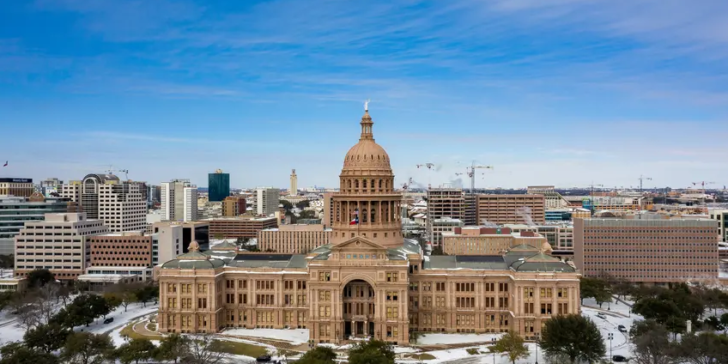
State government in Texas is more of a slapdash operation than our high school civics teachers prepared us for. Some of the people working in and around the Texas Capitol definitely know what they’re doing. There are some real Jedis out there.
Others — some of them in high elected places — leave you shaking your head. Some recent examples:
• A legislative committee ripped into the state’s Railroad Commission last week for doing what it was supposed to do under a law passed by the Legislature earlier this year in response to the freeze and power outages that killed as many as 700 Texans in February.
In a weird do-what-we-meant-and-not-what-we-said moment, as reported by The Texas Tribune’s Mitchell Ferman, members of a state Senate committee blasted the commission after learning that the agency hasn’t ordered gas companies to winterize their facilities before the weather turns cold again. But the agency was acting in accordance with a law passed by this Legislature earlier this year. The ink is barely dry. That law lets gas companies off the hook: If the companies don’t voluntarily designate themselves as “critical infrastructure,” they’re not required to weatherize.
The Railroad Commission was just following the Texas Legislature’s instructions.
• Here’s another one. The Legislature battled through a highly contested set of restrictive voting measures this year. The fight gobbled up their time before failing during the regular legislative session. The Republican majority prevailed in an overtime session this summer after weathering quorum-breaking walkouts by Democrats.
Now Republicans already want to change something in that legislation. The new law lowers the penalty for unintentional voter fraud. They knew that. The provision made news, along with other requirements in the legislation. This was the spectacle of the summer for anyone who was paying attention to the Texas Legislature.
And now some high officials are claiming somebody snuck the reduced penalty into the law.
That’s only true for lawmakers who don’t read this stuff before they vote.
After the governor signed the new voting and election bill into law, complete with that penalty reduction, activists and former officeholders chasing phantom election fraud said felony penalties needed to apply. The governor added increasing penalties to the official agenda of the current special session. The lieutenant governor tweeted in support, and blamed the House for the reduced penalty — in the process proving the Senate doesn’t read the legislation it votes on.
“Thanks @GovAbbott for placing a correction to an amd. on #SB1, which decreases the penalty for voting illegally, on the call. The House added last minute & went under the radar until Gov., @TXAG & I found it & agreed then it must be corrected. The Senate will pass next week.”
The speaker of the House, who is as Republican as the other two, tweeted — that’s how they squabble these days — that he and the House don’t want to mess with it, saying the bill “was passed by the Senate after both chambers and the Office of the Attorney General thoroughly reviewed and weighed in on the bill. With much acclaim from elected officials and voters, Governor Greg Abbott then signed the bill into law. Now is not the time to re-litigate.”
What was a fight between Republicans and Democrats for most of the year is now a family feud within the GOP.
Amid these displays of legislative prowess, lawmakers are drawing new political maps — a job required after the 2020 census was delivered, with its revelation that Texas has almost 4 million more people than it did 10 years ago and that 95% of the new Texans are people of color. Ten years ago, the 2010 census found the state had grown by 4.3 million people over a decade and that 89% of that growth was attributable to people of color.
Then and now, Republican lawmakers are trying to draw maps that allow them to hold their majority — and to do so without violating the U.S. Constitution or federal voting laws. It’s going the way you might expect. In a state where non-Hispanic white people make up less than 40% of the population, the majority of eligible voters in 59.3% of the proposed House districts are white. In the proposed Senate districts, it’s 64.5%. In the proposed Texas congressional districts, it’s 60.5%.
If these turn out to be the final maps, and the voters or the courts turn up their noses at the differences between population and representation, lawmakers needn’t worry.
They can always say they didn’t know what they were voting on.
This article was originally posted on When Texas legislators admit they don’t know what they’re doing